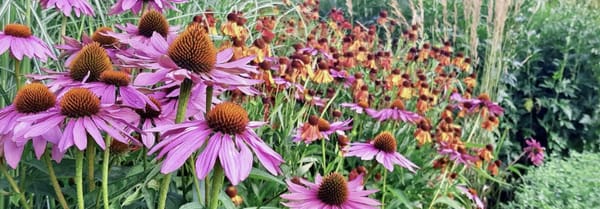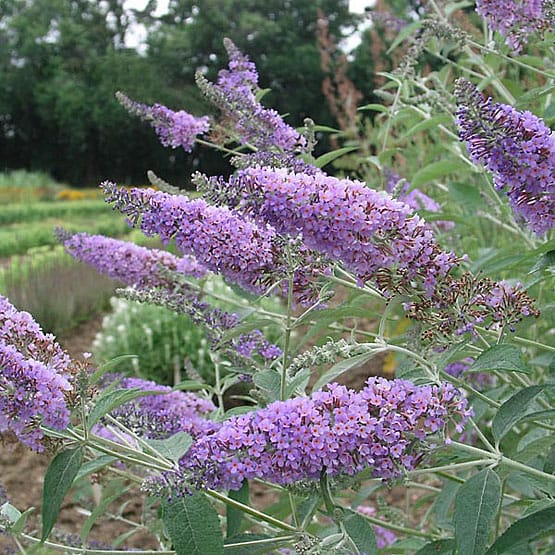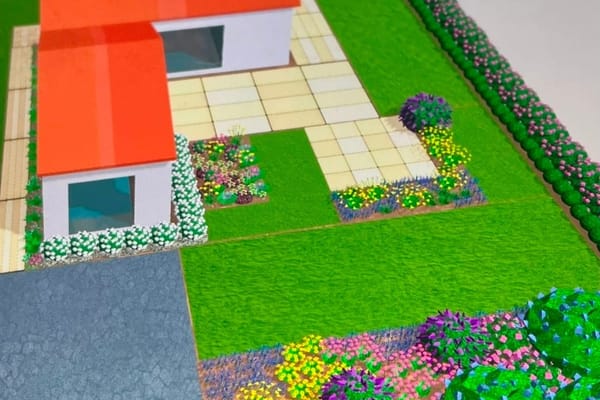Gardening with Wildlife

“In nature nothing exists alone” …. Rachel Carson
When I first moved to Sweden from Southern California, I was so excited because I was finally living in a climate that I could grow two of my favorite flowers; Tulips and Peony. The first year I ordered 50 Tulips to add to my garden. I prepared the garden, planted the bulbs and impatiently waited for Spring.
Everything was going as planned. Spring arrived and the Tulip buds were appearing through the thick layer of mulch and leaves. This was going to be great…...until it wasn’t.
In my excitement all I could think about was the beautiful blooms that were going grace my garden, but it also led me to making a huge rookie mistake. I didn’t do my due diligence and prepare a site analysis.
Then it happened: I woke up one morning, grabbed my coffee, and headed out the door for my morning ritual walk around the garden. That’s when I realized the deer had moved in, eating every one of my precious tulips. My hard work was all in vain and my heart was broken.
My goodness, what was I thinking? This is basic landscape design 101.
All my years of experience, all my training, and I was reduced to being a novice gardener in one night by a couple of deer. My lovely morning ritual, turned into the walk of shame. The only thing missing was a hangover and a broken stiletto heel.
After the shock and disappointment wore off, I rolled up my sleeves and went back to basics. I prepared a site analysis and did a lot of research.
My goal was to create and beautiful garden that could live in harmony with nature. I didn’t want to keep the deer and rabbits out. After all, that would just be a war I wasn’t going to win.
This was going to be a tough task, considering that deer and rabbits will eat just about anything if they’re hungry enough. Fortunately, I got lucky. I live adjacent to two forests full of berries and several large farms with pastures for them to easily forage on.
I then put together a list of plants known to deter deer and rabbits. I learned they didn’t like plants that have a strong scent or tasted bad. I was also happy to find out they didn’t like Peony. I did have a Peony setback, but that’s for another story.
In my research, I also discovered a variety of plants that not only deter deer and rabbits but also repel non-essential insects such as flies, mosquitoes, and aphids. Moreover, these plants attract pollinators such as butterflies and bees.
Here are just a few plants I have introduced into my garden with great success and by adding these plants I hope to be one step closer to developing a natural environment that lives one with nature.
Allium - Deer and Rabbits (USDA Zones 4-10)
Basil - Asparagus Beetles, White Flies, Flies, Carrot Flies and Mosquitos (USDA Zones 10-11)
Butterfly Bush – Deer and Rabbits (USDA Zones 5-10)
Borage - Tomato Hornworms and cabbage worms (USDA Zones 3-10)
Chives – Rabbits, Japanese Beetles, Aphids and Mites (USDA Zones 3-9)
Citronella – Mosquitos, Flies and Ticks (USDA Zones 10-12)
Cloves – Mosquitos, Ants, Wasps, Flies, Earwigs, Silverfish, Mites, Aphids and Coach Roaches (USDA Zones 11-12)
Daffodils – Deer, Rabbits, Moles (USDA Zones 3-9)
Daisies – Deer and Rabbits (USDA Zones 5-8)
Heuchera – Deer and Rabbits (USDA Zones 4-9)
Lavender – Deer, Rabbits, Mosquitos, Flies and Moths (USDA Zones 5-10)
Lemon Grass – Mosquitos and Flies (USDA Zones 10-11)
Marigolds – Deer, Rabbits, Whitefly, Squash Bugs and Tomato Worms (USDA Zones 2-11)
Mint – Ants, Moths, Flies and Ticks (USDA Zones 3-8)
Peony – Deer and Rabbits (USDA Zones 3-8)
Peppermint – Aphids, Beetles, Flies, Lice, Moths and Mice (USDA Zones 3-11)
Ranunculus – Deer and Rabbits (USDA Zones 8-10)
Rosemary – Deer, Rabbits, Mosquitos and Flies (USDA Zones 5-9)
Salvia – Deer and Rabbits (USDA Zones 5-9)
Thyme – Deer, Rabbits, Aphids, Whitefly, Cabbage Loopers, Tomato Hornworms and Corn Hornworms (USDA Zones 2-10)
For optimal results, ensure you select plants compatible with your USDA Zone and plant them in locations that match their specific needs for sunlight, water, and soil conditions.
Good luck! And strive for a happy garden.





